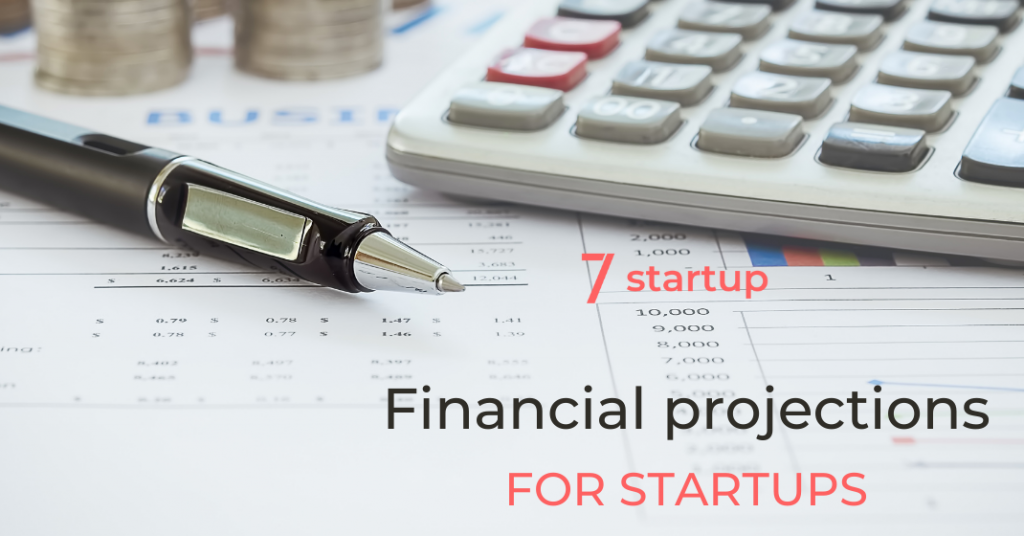Building Financial Projections for a Startup business can be an intimidating task for first-time entrepreneurs. Developing financial projections for potential investors, from forecasting revenue and growth to figuring out the detailed costs of your product or services, within a business plan to secure external funding can be challenging.
Typically the pitch deck, investment memo, and the overall business plan include financial projections with information on the team, technology, market, milestones, and competition of your specific business for investors. You should also include industry trends, revenue growth, the profit margin, operating expenses, cash inflow, cash outflow, and income statement to the overall financial performance for your startup.
I’m sure you’d agree that building a business model and investment collateral with any degree of accuracy is time-consuming – time you could instead spend selling your product or service.
On a granular level, startup financial projections are great at providing a line item of all costs to factor in when projecting your expenses for the upcoming month, quarter or year. We all know that revenue targets are dynamic and are likely to change as the business develops, but they are still essential and expected by VC investors. In this article, I’ve outlined a few methods of generating financial projections and key growth factors that can help founders with their early-stage startups for discussions with investors.
How to Forecast Revenue for Your Startup
As a business owner of a startup, your most important strength is new thinking but even more important is nimbleness and demonstrating financial health. To get a business loan or startup funding from venture capitalists and Angel investors you need to develop an accurate yet dynamic startup financial model and business plan, one that will convince seed investors and get you funded.
According to a report by Planergy, 18% of startups had pricing and cost issues, 30% of startups failed due to cash flow problems and 17% were effectively selling products without a business model (planergy.com)
To succeed ask yourself the following questions when developing your 3-5 year financial projections:
- Why am I creating these financial projections including the sales forecast?
- Who are the sales forecast, income statement, and balance sheet for?
- What are the financial statements and cash flow statements supposed to demonstrate?
- What are the funding requirements and for which financial period?
- What is the break-even point and growth potential in financial planning?
- What is the optimistic scenario for the startup’s business activity?
- What is the worst case scenario?
- What are the sales targets and sales projections?
- What are the customer acquisition costs and the conversion rate?
- What external factors need to be considered including the obtainable market?
- What is the period of time for the financial statements?
- Are there any business loans and the time period, the payback period?
- From the capital investment, what is the investment cash flow?
- What are the financial cash flow and cash flow projections?
- What are the direct costs and cost of sales?
- How does the business strategy align with the flow of cash?
- What are the profit and losses, and the operating profit?
- What are the key performance indicators to secure funding?
- What is the sales cycle?
- What are the company assets?
- How do we compare with the industry leaders?
- What market share are we aiming for and do we need additional funding to reach these targets?
- Is this business viable including the churn rate for subscriptions?
Financial Projections for Investors
Too often I see startups explain they’re a product-driven SaaS company but their business planning within the financial forecast and financial model highlights a product team of 4 people and a sales team of 12. Think about the narrative first!
The above should act as guiding principles for you to prepare these numbers. Revenue and growth calculations are crucial for understanding what you can afford and steer you towards startup growth. A good financial model will help you skilfully navigate potential cash flow shortages which can sink a startup fast.
To generate financial projections with conservative scenarios and actual performance you’ll need a couple of key documents – an income statement, a balance sheet, and a cash flow statement. Financial projections will differ for different types of companies, an InsurTech startup will be different than a MarTech startup.
Venture capitalists or Angel investors are usually hesitant in investing in startups that are unable to provide a set of meticulous forecasts. If you aren’t deliberately thinking about your numbers, you probably won’t even be in the right ballpark. Your startup financial model tells a story to investors, the numbers demonstrate your understanding of your landscape and are a key part of an investor pitch deck.
Huffington Post, CEO of Startup Professionals, Marty Zwilling says to be fundable, by year 5 revenue projections should be at least $20M, with an average growth rate of 100% per year.
Startup Bottom-Up Projections
When you’re in the early stages of a startup, it’s much easier to focus on your upcoming operational expenses than on upcoming cash flow and revenue forecasts including the business plan for bottom-up forecasting. This should include expenses for startups, such as:
- Cost Structures and the Expense Budget
- Burn Rate
- Percentage of Revenues allocated to operating expenses, marketing expenses, variable expenses
But for early stage startups, and especially a pre-revenue startup, it can be difficult to predict sales and profits in a financial statement or the future performance. You can far more accurately assess and regulate your spending. So, calculate what you are spending and the costs that are incurred by the business to generate sales. Once that’s in place, determine your startup pricing strategy and sales volume that you’ll need to be profitable in your cash flow statement and balance sheet.
So, start with estimates for the most common classifications of expenses – Fixed costs v/s Variable Costs.

Here are some unwritten rules that you should follow when forecasting expenses:
- Account for direct sales and customer service time as personnel cost even if you are doing these activities yourself during the early stage.
- Forecast these costs when you have more clients on board.
- Double your estimates for advertising and marketing costs since they are always higher than expectations.
- Triple your estimates for legal, insurance, and licensing fees since they are difficult to predict without prior experience and almost always exceed expectations
Top-Down Forecasting
For startup fundraising, founders need to make sure they project attractive revenues and growth to lure seed investors. Of course, the numbers need to match the market size data researched and included in your investor pitch deck.
Passionate entrepreneurs like to make big claims to try and entice potential investors. But pause and think for a moment. Anyone smart enough to accumulate that amount of free investable capital probably also has the acumen and experience to instantly discern hype from reality.
On the flip side, if you’re post-revenue and seeking growth capital or a traditional bank loan, they’ll be expecting pretty standard 1 – 5 year financial projections. Big growth claims might scare them off.
For this very reason, some entrepreneurs choose a top-down approach. Starting with the market size, potential market share, and what costs and investment it will take to hit those numbers.
One way to support your big claims is to benchmark your numbers against competitor’s data or business and stage, their seed or series A funding round, or location.
For Top-down Projections to make sense, include:
- Breakeven point
- Profit margins as you scale (incorporate any discounts and future overheads)
- Revenue per employee
Pricing a new product or service is not purely a financial equation. A sound pricing strategy requires communicating with your target customers, cost calculations, and pricing where customers are willing to buy your product or service.
Conclusion
In short, financial projections cover a lot of bases, forecasting future revenue and expenses. But there’s one thing that startup financial projections can’t do and that’s fortune-telling. For post-revenue startups, financial projections include historical data, while also including a prediction for external market factors.
Most startups I meet need help on their financial projections:
- How to do them
- What to include
- How to structure them
- When to show them
- What story to tell
I suggest you start with writing down all your hypotheses and validate them one by one. We know running these numbers may not be your favourite part of launching and running your own company, a financial model and projections is a business framework to cope with uncertainty and growth.
You may also like this blog: How to Value a Startup

Amit Khanna, 7startup Founder
Amit has 18 years of experience in the industry and an MBA. He supports entrepreneurs with every aspect of their business including concept and product development, investor presentations, and fundraising. Amit & 7startup assist startups in the pre due-diligence process and help connect them to our vast network of investors. Reach out to us today and see if we’re a fit!





